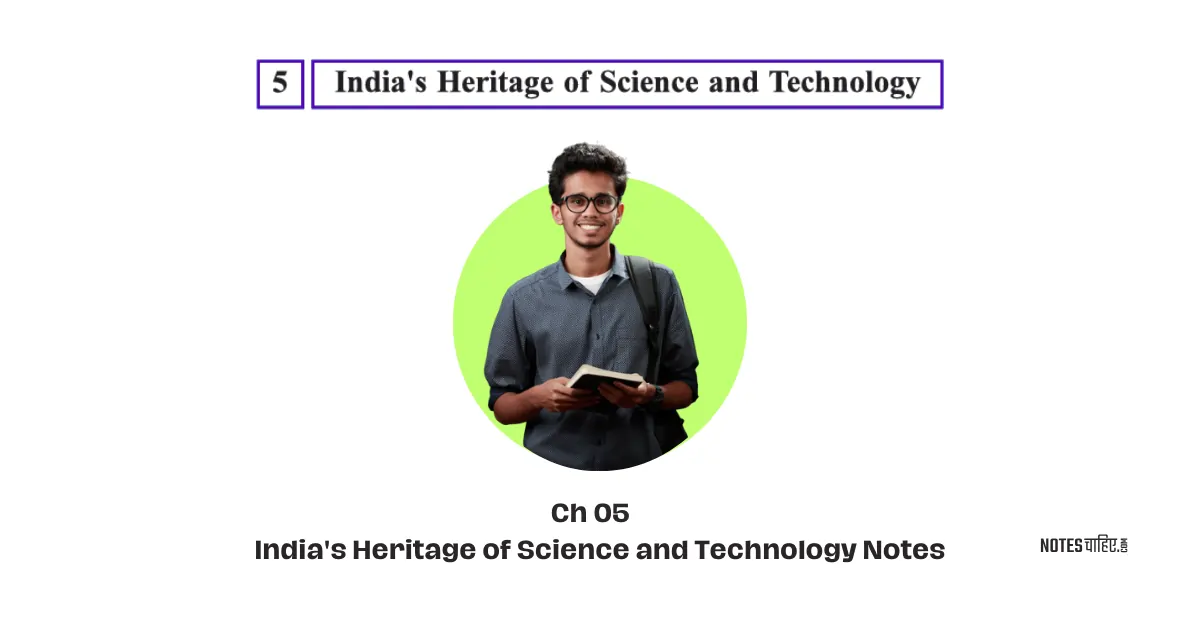GSEB Class 10 Social Science Chapter 05 Literary Heritage Of India Notes to learn fast and easy to remember is here on NotesChahiye.
We have created the complete book notes topic wise. The note is in points and tabular format so that you can retain them easily and you can save your time.
India’s heritage of science and technology notes underscores the global connectivity fostered by discoveries, promoting cooperation and a shift towards peaceful coexistence.
The collaborative essence of advancements emphasizes diplomacy over conflict, defining science as systematic knowledge and technology as its practical application.
The inherent link between science and technology contributes to a global recognition of the need for collaboration to advance humanity, aligning with India’s commitment to a heritage that promotes world peace.
Heritage of Ancient India in the field of Science and Technology Notes

Great Contributions:
- Ancient Indian sages gave the world valuable knowledge in Metallurgy, Chemistry, Medicine, Surgery, Mathematics, Astronomy, Astrology, Vastushastra, and Physics.
Proud Legacy:
- India’s pride goes beyond arts and philosophy to include significant contributions in science and technology.
Diverse Achievements:
- Metallurgy and Chemistry: Experts in manipulating materials.
- Medicine and Surgery: Profound healthcare knowledge.
- Mathematics: Pioneers in math principles.
- Astronomy and Astrology: Deep insights into celestial bodies.
- Vastushastra: Experts in architecture.
- Physics: Early explorations into physical laws.
Modern Confirmation:
- Recent research supports India’s scientific and religious outlook.
- Recognition of a rich scientific tradition blending spirituality and empirical understanding.
Balanced Approach:
- India’s historical achievements show a unique balance between science and religion.
- The coexistence reflects a holistic approach to knowledge and discovery.
In short, ancient India’s scientific heritage, spanning various fields, is a testament to the wisdom of its sages, influencing the modern world.
Metallurgy in Ancient India Notes

Importance:
- Metallurgy was crucial in ancient India’s daily life and progress.
- It showed remarkable advancements over time.
Indus Valley Civilization:
- Found a metal dancer idol from this era, displaying early skills.
- Shows how good ancient Indian metallurgists.
Kushan Period and Takshashila:
- Buddha statues from Kushan period at Takshashila reveal continued excellence.
- Metalwork reflects art and culture.
Chola Period in South India:
- South India, especially during Chola period, created precise metal idols.
- Contributed to rich metallurgical heritage.
Masterpiece: Natraja Statue:
- Natraja statue in Chennai museum is a global masterpiece.
- Represents high-level metallurgical and artistic achievement.
Ram – The Archer:
- ‘Ram – The Archer’ metal idol is displayed in a museum.
- Highlights diversity and skill of ancient Indian metallurgy.
Artistic Representations:
- Artistic metal statues of Gods, animals, and more showcase diverse themes.
- Each piece has cultural and religious importance.
Cultural Heritage:
- Metallurgical artifacts are vital in India’s history and culture.
- They reflect advanced skills and cultural richness of ancient Indian metallurgy.
Chemistry (Alchamical Lore) Notes
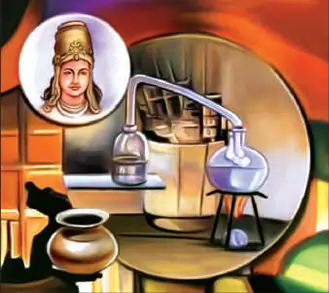
Science is Practical:
- Chemistry is a hands-on and practical science.
- It helps with farming, making metals, and even creating medicines.
Acharya Nagarjuna – Chemistry Expert:
- Nagarjuna, a smart person from Nalanda University, knew a lot about chemistry.
- He wrote important books like ‘Rasaratnakar’ and ‘Arogyamanjari.’
Mixing Medicines:
- Nagarjuna liked using both regular and herbal medicines together.
- He even used special kinds of ash, like mercury ash, for healing.
Chemistry School in Nalanda:
- Nalanda University had a special school for studying chemistry.
- They learned about different types of poisons, salts, and ashes.
Clever Copper Statues:
- Smart people made Buddha statues using chemistry.
- A huge copper statue in Bihar shows how skilled they were.
Tall Buddha Statue:
- In Sultangunj (Bihar), there is a big copper Buddha statue that’s 7.5 feet tall.
- In Nalanda (Bihar), there’s a big Buddha statue that’s 18 feet tall.
- It shows how good they were at making large sculptures.
Strong Iron Pillar – Vijay Stambha:
- Chandragupta II made a tall iron pillar called Vijay Stambha.
- Even after a long time, it didn’t rust, showing India’s chemistry skills.
Chemistry’s Lasting Impact:
- The strong iron pillar proves that India’s chemistry knowledge lasts a really long time.
- They knew how to make things that wouldn’t easily break or corrode.
Science of Medicine and Surgery in Ancient India:
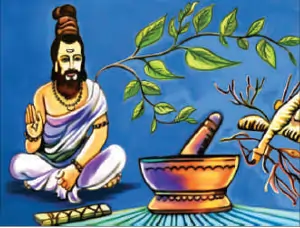
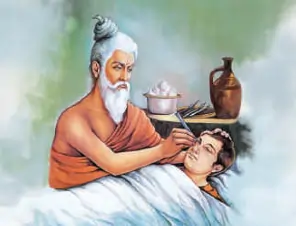
Pioneers:
- Charak, Sushrut, and Vagbhatta advanced Indian medicine.
- Their research laid the foundation for medical achievements.
Charak Samhita:
- Charak’s ‘Charak Samhita’ lists 2000+ herbs.
- A valuable resource for doctors.
Surgical Precision:
- Sushrut described ultra-sharp surgical tools.
- Expertise in delicate surgeries.
Vagbhatta’s Contribution:
- Vagbhatta’s ‘Vagbhatta Samhita’ is crucial.
- Study of all three Samhitas is beneficial.
Herbal Science:
- Hindu herbal science used minerals and plants.
- Detailed medicine-making processes.
Surgical Techniques:
- Skilled bone operations and plastic surgery known.
- Procedures for broken bones, foreign objects, and plastic surgery.
Medical Education:
- Scholars taught surgery, often demonstrating on models.
- Expertise in childbirth, gynecology, and pediatrics.
Veterinary Science:
- ‘Hasti Ayurveda’ and ‘Ashwashastra’ focused on animal diseases.
- Especially for horses and elephants.
Diagnostic Contribution:
- Vagbhatta’s ‘Ashtang Hriday’ aids diagnosis.
Ancient India excelled in medicine and surgery, impacting medical practices and knowledge.
Mathematics in Ancient India Notes
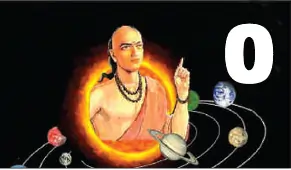
Zero and Decimal Systems:
- Aryabhatta, an ancient Indian mathematician, is credited with the discovery of ‘zero’ (0).
- The process of writing zero after figures was introduced by the sage ‘Grutsamad.’
Number Notation:
- Indian mathematicians determined the names of numbers with up to 53 zeros after 1, showcasing a profound understanding of large numbers.
Decimal System Usage:
- The decimal system was employed for measuring and weighing instruments, evident in archaeological finds from ‘Harappa’ and ‘Mohan-Jo-Daro.’
Contributions by Bhaskaracharya:
- Bhaskaracharya, in 1150 A.D., authored ‘Lilawati Ganit’ and ‘Bij Ganit.’
- He introduced the signs of addition (+) and subtraction (-).
Brahmagupta’s Equations:
- Brahmagupta categorized types of equations, contributing to algebraic understanding.
Boddhayan’s Theorem:
- Boddhayan is credited with discovering the theorem, particularly known for the ‘triangle policy’ in geometry.
Measurement in ‘Shulva Sutras’:
- Aapstambha, in ‘Shulva Sutras’ (1800 B.C.), determined the measurement of sacrificial pits (yagyavedis) used for Vedic Yagyas.
Aryabhatta’s Mathematical Innovations:
- Aryabhatta introduced the ‘Ashtang’ method encompassing multiplication, addition, subtraction, square root, and cube root.
- He is revered as the ‘father of Mathematics’ for his foundational contributions.
- Aryabhatta, in “Aryabhattiyam,” proposed the value of π (pie) as 22/7 (approximately 3.14).
- Emphasized π as a constant, representing the ratio of the circumference to the diameter of a circle.
- Aryabhatta authored several books, including ‘Dash Gitika’ and ‘Aryabhattiyam.’
- His book “Aryasiddhanta” succinctly outlines the main principles of Astronomy.
- Aryabhatta’s contributions extended beyond Mathematics to include solutions for fundamental concepts in both Arithmetic and Geometry.
Diverse Scholarly Contributions:
- Various scholars like Boddhayan, Aapastambha, Katyayan, Bhaskaracharya, and Brahmagupta significantly contributed to different aspects of Mathematics.
Astronomy and Astrology Notes
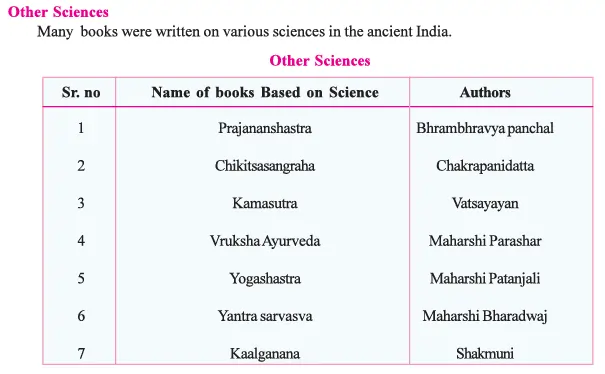
Ancient Beginnings:
- Astronomy, an ancient science, started in ancient India.
- Indian books, called Granthas, talked a lot about Astronomy.
Indian Discoveries:
- Indian schools studied both Astrology and Astronomy in an organized way.
- They used the movement of planets and stars for calculations.
Aryabhatta’s Achievements:
- Aryabhatta, a smart person, did a lot for Astronomy.
- The first Indian satellite was named after him, and he explained things like Earth spinning and lunar eclipses.
Brahmagupta’s Gravity Ideas:
- Another smart person, Brahmagupta, talked about gravity in his book.
- His ideas helped us understand how things in space move.
Varahmihir’s Astrology Wisdom:
- Varahmihir, good at astrology, wrote about Tantra, Hora, and Samhita.
- His book, ‘Brihadsamhita,’ told us about the effects of planets on people and good times for things like marriage.
Many Uses:
- ‘Brihadsamhita’ had info on planets affecting people, animal groups, and when it’s good to do things like planting seeds.
Our Ancestors’ Smarts:
- Our ancestors knew a lot about many things, showing how smart ancient Indians were.
- Their knowledge in Astronomy and Astrology still influences us today.
In short, ancient India’s mix of looking at the sky and understanding people’s lives shaped Astronomy and Astrology, making a lasting impact on our culture and science.
Vastushastra Notes
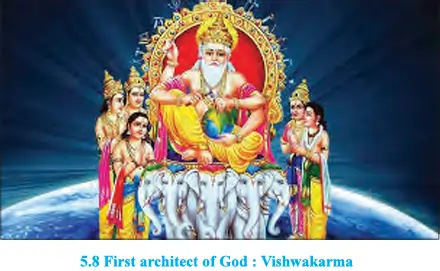
Roots in India:
- Vastushastra is ancient wisdom from India, linked to astrology.
- Important figures like Brahma, Narad, and Vishwakarma contributed to it.
Global Fame:
- India’s Vastushastra is respected worldwide.
- Many countries appreciate its principles.
Key People:
- Vishwakarma, the first architect of Gods, defined eight sections.
- Sages guided construction principles for various structures.
Scriptures:
- ‘Brihat Samhita’ details Vastushastra.
- Rana Kumbha revived it in the 15th century.
Evolution:
- Vastushastra has changed over time.
- Foreigners now use its principles.
Vishwakarma’s Wisdom:
- Sections cover place selection, structures, and planning for various spaces.
Global Acceptance:
- Ancient Indian knowledge is globally accepted.
- India’s blend of science, religion, and tradition is unique.
Unity in Diversity:
- Indian culture is diverse but united.
- Tolerance and equality are core values.

